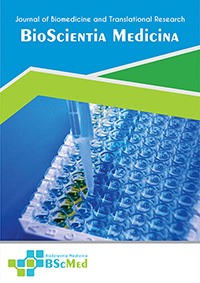Main Article Content
Abstract
Background: Comprehensive clinical-epidemiological data on severe autoimmune bullous diseases (ABDs) from Southeast Asian populations are notably scarce. Pemphigus vulgaris (PV) and bullous pemphigoid (BP) are the most common ABDs, and understanding their presentation in diverse ethnic and geographic contexts is crucial for global health equity. This study’s primary aim was to characterize a cohort of hospitalized ABD patients in Central Java, Indonesia, and to secondarily explore the behavior of the neutrophil-to-lymphocyte ratio (NLR) as an inflammatory marker within this real-world clinical setting.
Methods: A retrospective, cross-sectional study was conducted at a tertiary referral hospital in Surakarta, Indonesia. The study included all patients admitted with a final diagnosis of PV or BP between January 2019 and December 2023. Comprehensive data on demographics, documented comorbidities, duration of hospitalization, and admission hematological parameters were extracted from medical records. Clinical characteristics were compared, and the non-parametric Mann-Whitney U test was used to analyze the difference in NLR. A post-hoc power analysis was performed to contextualize the hematological findings.
Results: This study provides a detailed clinical profile of 30 hospitalized ABD patients. The PV cohort (n=17) was characterized by a younger age of onset (mean age 54.29 ± 14.83 years) and a strong female predominance (70.6%). In contrast, the BP cohort (n=13) was older (mean age 63.08 ± 22.01 years) with a balanced gender distribution. A key finding was that patients with PV had a significantly longer duration of hospitalization than those with BP (13.24 vs. 10.15 days, p < 0.05). The mean NLR was descriptively higher in BP (10.56 ± 7.22) than in PV (9.43 ± 6.14), but this difference was not statistically significant (p = 0.770), a finding consistent with the study’s critically low statistical power of 9.8%.
Conclusion: This study presents a valuable clinical and epidemiological snapshot of hospitalized patients with PV and BP in an underrepresented Indonesian population, highlighting a significantly greater clinical burden for PV as quantified by length of stay. The exploratory analysis of the NLR was inconclusive and should not be interpreted as definitive evidence against its utility. Instead, it serves as a powerful illustration of how the effects of low statistical power and overwhelming, unmeasured confounding from disease severity and corticosteroid treatment present profound challenges to the validation of non-specific biomarkers in complex, real-world clinical scenarios.
Keywords
Article Details
As our aim is to disseminate original research article, hence the publishing right is a necessary one. The publishing right is needed in order to reach the agreement between the author and publisher. As the journal is fully open access, the authors will sign an exclusive license agreement.
The authors have the right to:
- Share their article in the same ways permitted to third parties under the relevant user license.
- Retain copyright, patent, trademark and other intellectual property rights including research data.
- Proper attribution and credit for the published work.
For the open access article, the publisher is granted to the following right.
- The non-exclusive right to publish the article and grant right to others.
- For the published article, the publisher applied for the Creative Commons Attribution-NonCommercial-ShareAlike 4.0 International License.





